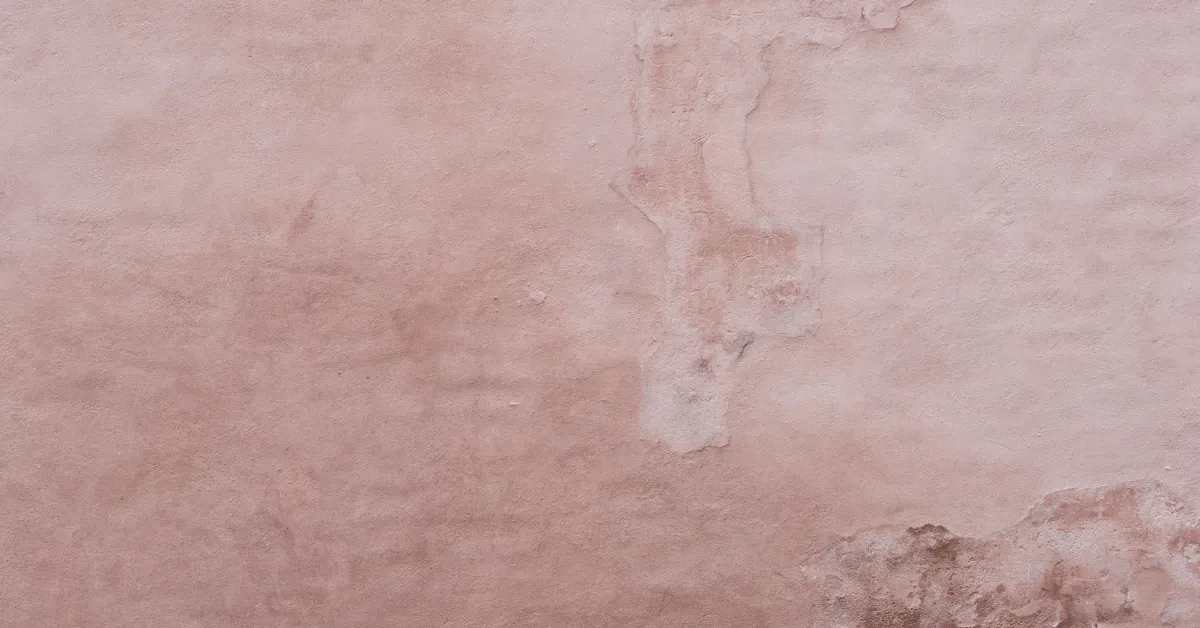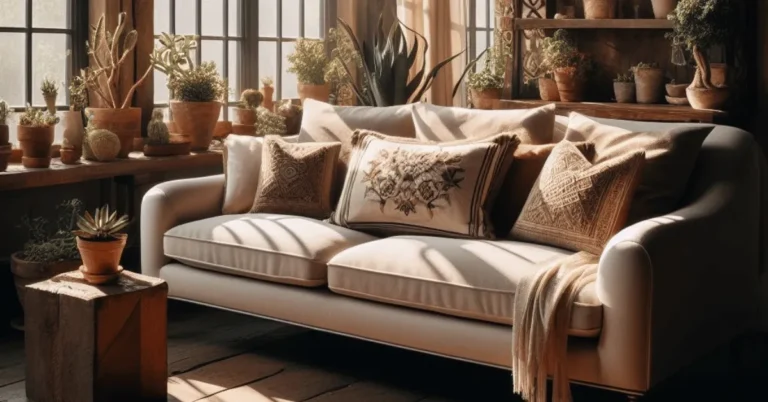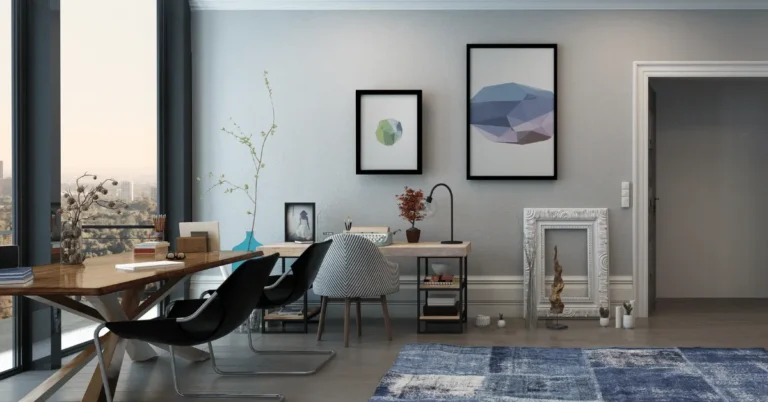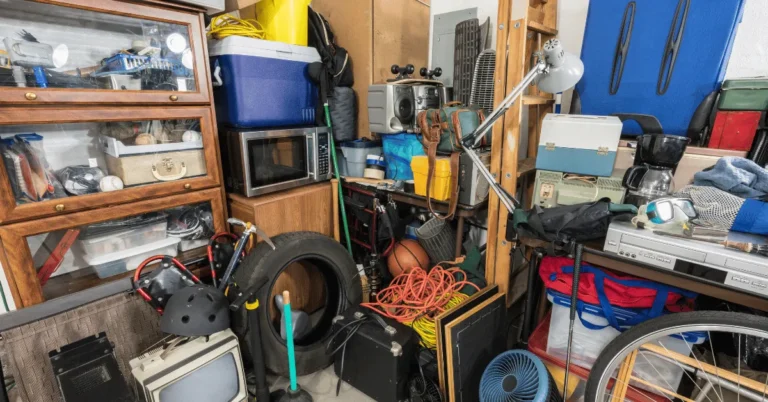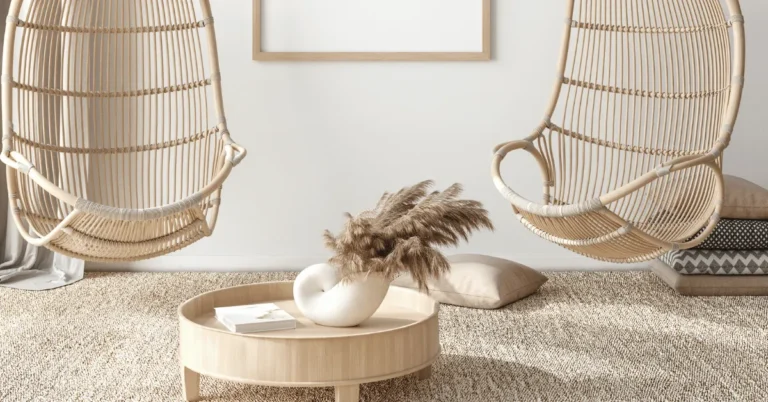How to Hide Wall Imperfections With Paint?
Homeowners frequently encounter a range of wall imperfections, from unsightly cracks and dents to uneven textures that can detract from the overall aesthetic of a room.
These flaws are not merely superficial concerns; they can also impact the structural integrity of your walls if left unaddressed.
Understanding how to hide wall imperfections with paint is essential for maintaining both the beauty and durability of your living spaces.
What are the causes of cracks in a wall that you need to hide?
Cracks in walls are a common issue, often resulting from the natural settling of a home or minor structural shifts over time.
These imperfections can vary in size and severity, making them a primary target for concealment.
Dents and dings, typically caused by everyday activities, are another prevalent problem. These can range from minor surface marks to more noticeable indentations that disrupt the smoothness of your walls.
Uneven textures present another challenge. Whether caused by previous subpar paint jobs or inherent flaws in the wall material, these inconsistencies can create an undesirable visual effect.
Addressing these issues through strategic painting techniques not only enhances the appearance of your walls but also helps prevent further deterioration.
Why you need to hide these flaws?
The importance of addressing wall imperfections extends beyond aesthetics. Cracks and dents, if ignored, can worsen over time, leading to more significant damage that may require costly repairs.
Additionally, well-maintained walls contribute to the overall stability and longevity of your home.
By learning how to hide wall imperfections with paint, you can effectively protect your investment while creating a more visually pleasing environment.
This guide will delve into the various methods and techniques for concealing these common wall issues, offering practical advice and expert tips to help you achieve a flawless finish.
From selecting the right materials to mastering specific painting techniques, you’ll be equipped with the knowledge needed to transform your walls and enhance your home’s interior.
Choosing the Right Colored Paint for Concealing Imperfections
When it comes to concealing wall imperfections with paint, the choice of color and finish plays a crucial role.
Certain colors and finishes are inherently better at masking flaws, making your walls look smooth and flawless even if they are not.
One of the most effective strategies is to opt for matte finishes and darker shades. These choices can significantly reduce the visibility of imperfections.
Matte finishes are known for their non-reflective properties. Unlike glossy finishes, which can highlight bumps and dents by reflecting light, matte paints absorb light, thereby minimizing the appearance of irregularities.
This makes them an excellent choice for older walls or surfaces with noticeable imperfections. Additionally, matte finishes tend to have a richer, more sophisticated look, adding depth and warmth to your space.
Darker shades also play a significant role in camouflaging wall flaws. Dark colors like navy blue, charcoal grey, and deep greens are particularly effective.
These colors absorb more light, which helps to mask imperfections. In contrast, lighter shades tend to reflect more light, which can make any bumps or dents more noticeable.
By choosing darker tones, you can create a more uniform and visually appealing surface.
Specific colors that are particularly good at hiding wall imperfections include warm neutrals such as taupe, mocha, and rich beige.
These colors provide a cozy and inviting atmosphere while effectively concealing imperfections.
The science behind this lies in their ability to blend seamlessly with shadows, making surface irregularities less noticeable.
In essence, when you’re aiming to hide wall imperfections with paint, selecting the right color and finish is paramount. Matte finishes and darker shades are your best allies in this endeavor.
By understanding and leveraging these principles, you can achieve a smooth and aesthetically pleasing wall surface, regardless of its underlying flaws.
Want to showcase your personality without clutter? Learn How Do You Hide Things on The Wall? with clever display tricks!
Effective Techniques for Hiding Wall Imperfections
When it comes to mastering the art of concealing wall imperfections with paint, employing the right techniques can make a significant difference.
Various painting methods, from sponging and rag rolling to using textured paint, offer effective solutions for masking flaws on your walls.
Below, we delve into each technique, providing step-by-step instructions to help you achieve the best results.
Sponging
Sponging is a versatile technique that can add depth and dimension to your walls while effectively hiding imperfections. Start by selecting two complementary colors. Apply a base coat in one of the colors and let it dry completely.
Next, dip a natural sea sponge into the second color, removing any excess paint. Gently dab the sponge onto the wall, creating a textured appearance. The irregular pattern helps camouflage uneven surfaces while adding a unique visual appeal.
Rag Rolling
Rag rolling is another excellent method for disguising wall imperfections. Begin by applying a base coat and allowing it to dry. Then, take a clean, damp rag and dip it into a contrasting paint color.
Roll the rag into a cylindrical shape and gently roll it over the wall in random motions. The resulting effect is a sophisticated, marbled texture that distracts the eye from any underlying flaws. Experiment with different rag types and paint colors to achieve varying effects.
Textured Paint
Using textured paint is perhaps the most straightforward technique for hiding imperfections. Textured paints come in various forms, such as sand, stone, or popcorn finishes, and can be applied with a standard paint roller or brush.
The thick consistency of textured paint fills in minor dents and cracks, creating a uniform surface.
For best results, follow the manufacturer’s instructions and apply multiple coats if necessary. This technique is particularly effective for older walls with numerous imperfections.
By incorporating these techniques—sponging, rag rolling, and using textured paint—you can transform flawed walls into aesthetically pleasing surfaces.
Each method provides a unique finish that not only conceals imperfections but also enhances the overall appearance of your space.
Feeling overwhelmed by a corner overflowing with stuff? Our guide on “How to Hide a Messy Corner in a Room?” might be just what you need for a quick fix!
Benefits of Hiding Wall Imperfections with Paint
Utilizing paint to conceal wall imperfections offers a myriad of benefits, extending beyond mere visual enhancement. One of the primary advantages of addressing wall flaws with paint is the significant aesthetic improvement it brings to any space.
A coat of well-applied paint can effectively mask cracks, dents, and other surface irregularities, providing a smooth and polished appearance.
This transformation can turn an otherwise neglected room into an inviting and cohesive environment.
Moreover, hiding wall imperfections with paint can contribute to an increase in property value. Potential buyers are often attracted to homes that appear well-maintained and move-in ready.
By investing in high-quality paint and professional application, homeowners can ensure that their property presents itself in the best possible light.
This visual appeal can be a decisive factor in real estate transactions, often leading to quicker sales and potentially higher offers.
Beyond the tangible benefits related to property aesthetics and value, there are also significant psychological advantages to living in a well-maintained space.
A visually pleasing environment can enhance mood and reduce stress, contributing to overall well-being.
When imperfections are hidden, the space feels cleaner and more orderly, creating a sense of comfort and satisfaction.
This is particularly relevant in personal living spaces where individuals spend most of their time.
In addition to these advantages, using paint to cover wall imperfections is a cost-effective solution.
Compared to extensive renovation or wall replacement, painting is relatively affordable and less time-consuming.
It allows for a quick and efficient upgrade, making it an accessible option for homeowners and renters alike.
In conclusion, learning how to hide wall imperfections with paint not only elevates the visual appeal and market value of a property but also fosters a more enjoyable and serene living experience.
By embracing this technique, individuals can effectively tackle minor wall issues while reaping substantial benefits in both their personal and financial lives.
For a stylish finishing touch, check out our guide What to Put Above a TV? and discover the perfect décor for your setup!
Potential Drawbacks of Using Paint to Conceal Imperfections
While using paint to hide wall imperfections can be an effective and aesthetically pleasing solution, it is important to consider the potential drawbacks associated with this approach.
One of the primary concerns is the temporary nature of the fix. Paint can mask imperfections such as minor cracks, dents, or stains, but it does not address the underlying issues.
Over time, these imperfections may resurface, necessitating additional touch-ups or more comprehensive repairs.
Another significant drawback is the possibility of the imperfections reappearing if the paint is not applied correctly.
For example, if the surface is not properly prepared or if an inadequate number of coats is applied, the imperfections may become visible again.
In some cases, the paint itself can inadvertently draw attention to the flaws. This can happen if the paint color or finish is not well-suited to the type of wall imperfection being concealed.
For instance, glossy finishes tend to highlight surface irregularities, making them more noticeable.
It is also important to recognize that there are scenarios where other methods may be more appropriate for addressing wall imperfections.
For instance, significant structural damage or large holes may require more extensive repairs such as plastering or drywall replacement.
In such cases, relying solely on paint might not provide a satisfactory or lasting solution. Additionally, certain types of wall imperfections, like mold or mildew, require specialized treatments to ensure a healthy living environment, and paint alone will not suffice.
In summary, while paint can be a useful tool for concealing minor wall imperfections, it is not a one-size-fits-all solution.
Understanding the limitations and potential drawbacks of using paint for this purpose is crucial in making an informed decision.
By carefully considering the specific nature of the imperfections and the most appropriate method for addressing them, homeowners can achieve a more durable and visually appealing result.
Love books but tight on shelves? We’ve got clever solutions for you! Learn How to Organize Your Books Without a Bookshelf?
Step-by-Step Guide to Hiding Wall Imperfections with Paint
Achieving a flawless wall finish requires meticulous preparation and execution. Follow these detailed steps to master how to hide wall imperfections with paint effectively.
Preparation Steps
Before you begin painting, ensure the wall is clean. Dust, grime, and grease can prevent paint from adhering properly. Use a mild detergent solution to wash the wall, then rinse with water and allow it to dry completely.
Next, inspect the wall for any cracks, holes, or uneven surfaces. Use a putty knife to fill these imperfections with a high-quality filler, and sand the repaired areas smooth once dry. Sanding the entire wall lightly can also help create a uniform surface for painting.
Choosing the Right Tools
The right tools can make a significant difference in the outcome. Invest in high-quality brushes and rollers appropriate for the type of paint you are using.
A roller with a thicker nap is ideal for textured walls, while a thinner nap works best on smooth surfaces.
Additionally, having painter’s tape, drop cloths, and a sturdy ladder will facilitate a more efficient and cleaner painting process.
Applying Primer
Priming the wall is a crucial step to ensure the paint adheres well and to further conceal imperfections. Choose a primer that is suitable for your wall type and the paint you plan to use.
Apply a coat of primer evenly across the wall, paying extra attention to the areas where imperfections were repaired. Allow the primer to dry completely before proceeding to paint.
The Painting Process
Once the primer is dry, you are ready to paint. Begin by cutting in with a brush along the edges and corners of the wall.
This will create a clean outline for the roller to follow. Use long, even strokes to apply the paint with a roller, working in sections to ensure a smooth and consistent finish.
For walls with significant imperfections, consider using a textured paint or a matte finish, as these are more forgiving and can help mask flaws more effectively.
Following these steps will enhance your ability to hide wall imperfections with paint, resulting in a more polished and professional appearance. Remember, patience and attention to detail are key to achieving the best results.
For a system that lets you grab the perfect book every time, dive into our tips on How to Organize Bookshelves by Genre?
Maintenance and Touch-Up Tips for Long-Lasting Results
Maintaining the appearance of your painted walls is crucial for ensuring that they continue to conceal imperfections effectively over time.
Regular maintenance practices can keep your walls looking freshly painted and free from unsightly defects.
To begin with, it’s essential to routinely dust and clean your walls. Use a soft, damp cloth or a sponge with mild soapy water to gently wipe away dirt and grime.
Avoid harsh chemicals or abrasive cleaning tools, as these can damage the paint and reveal the imperfections you worked hard to hide.
New imperfections can arise, even with the most meticulous care. For minor scratches or scuffs, a simple touch-up can be performed using leftover paint.
Ensure the area is clean and dry before applying a small amount of paint with a fine brush. For larger areas, feather the edges of the paint to blend seamlessly with the existing coat.
If you no longer have the original paint, bring a sample of the wall color to a paint store to match it as closely as possible.
Over time, the paint may start to wear off or fade, especially in high-traffic areas. When this occurs, it might be necessary to repaint sections of the wall or even the entire wall.
Before repainting, inspect the wall for any new imperfections and address them using appropriate methods such as filling holes or smoothing rough patches.
Applying a primer before the new coat of paint can enhance adhesion and provide a more uniform finish.
In addition to routine cleaning and touch-ups, consider using high-quality paint with a durable finish. Such paints are more resistant to wear and can better maintain their appearance despite everyday challenges.
Moreover, selecting a paint with a satin or semi-gloss finish can make cleaning easier and help hide wall imperfections more effectively.
By following these maintenance and touch-up tips, you can ensure that your painted walls continue to look pristine and serve their purpose of concealing imperfections for years to come.
Want to give your open shelves a stylish makeover? Check out our guide on How to Cover Shelves With Fabric? (Easy Steps) for a fun and functional DIY project!
Conclusion and Final Thoughts
In this comprehensive guide, we have explored various techniques on how to hide wall imperfections with paint.
The discussion has highlighted that with the right approach, paint can be a powerful tool in concealing flaws and enhancing the aesthetic appeal of any room.
We began by emphasizing the importance of selecting high-quality paint and the right type of finish.
Matte and eggshell finishes, for instance, were recommended for their ability to minimize the visibility of imperfections due to their lack of reflectivity.
Furthermore, we examined the significance of surface preparation. Properly cleaning, sanding, and priming the walls were identified as crucial steps to ensure a smooth and lasting finish.
We also delved into the use of textured paints and techniques such as faux finishes to artfully disguise more pronounced wall defects.
These methods not only hide imperfections but also add depth and character to the walls, creating a visually appealing environment.
Regular maintenance of painted surfaces was also discussed as a key factor in preserving the look of your walls. Routine touch-ups and cleaning can prolong the life of the paint job and keep imperfections concealed over time.
Finally, we encouraged readers to carefully assess their specific situation and choose the painting technique that best suits their needs.
While some may opt for DIY solutions, others might find professional assistance more effective for achieving the desired results.
Ultimately, mastering the art of concealing wall imperfections with paint requires a thoughtful approach and attention to detail.
By considering the various techniques and maintenance practices discussed, readers can make informed decisions that enhance the beauty and longevity of their painted surfaces.
